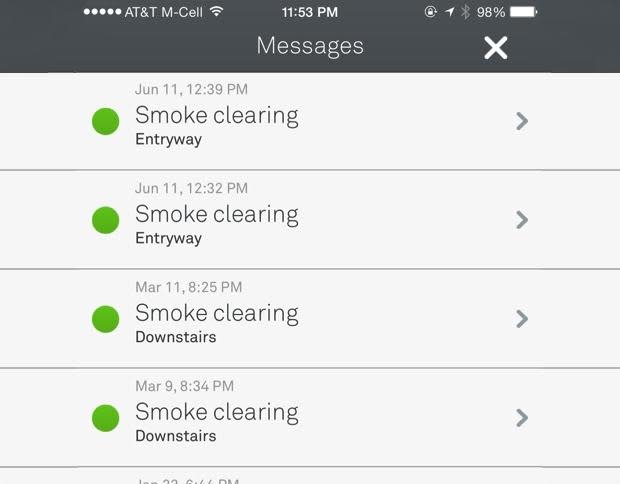Faulty smoke detectors illustrate the downsides of the smart home

When Nest announced its Protect smoke detector and carbon monoxide monitor in late 2013, I was thrilled. I loved my Nest Thermostat, and since my wife and I had just moved into a new townhome, we preordered six Protects for $129.00 (USD) each.
It's too bad that the Protects have been nothing but trouble since we got them, giving panic-inducing false alarms, including two when we were on vacation -- though we did receive push notifications on our iPhones about the alarms. As such, we're ready to chuck the Protects out the window.
The Nest Protect is an app-enabled smoke detector that connects to the internet via Wi-Fi. It includes a number of useful features that are unique to connected smoke detectors. For example, the Protect can connect to the Nest Thermostat to turn off the furnace when the carbon monoxide detector goes off.
It can also send an alert to your smartphone when the alarm goes off, including multiple levels of detection -- when it detects low-level amounts of smoke, the Protect has an early warning mode called Heads-Up. It starts with voice warnings and then proceeds to beeping sounds as the smoke levels increase.
The Protect uses voice prompts in addition to the beeping sounds, telling occupants in plain English what the alert is for (carbon monoxide or smoke) and what room it's in -- the Protect includes a number of preset room names like "master bedroom," "hallway," and "downstairs."
The Nest Protect is even certified by a number of safety organizations, such as the Underwriters Laboratories and safety organizations in Britain and the European Union.
All those great features (which we love, when they work) are completely useless when the Nest Protect alarms for no reason. Faulty electronics are annoying enough when they're an iPhone or an Xbox -- it's something else when people rely on that product to notify them of life-threatening situations.
We had several false alarms with our initial batch of six preordered Protects. The first time, we had a terrified house sitter flee the house and call the fire department. Our local fire department (where I'm a volunteer firefighter) came out and determined there was no fire, smoke, or anything else that should have set off the alarm.
After complaining to Nest, they sent out a replacement detector, and we shipped the "defective" unit back. We never heard from the company what had gone wrong. After several other false alarms from other Protects in the initial shipment (and replacements of those), we asked Nest to replace all the smoke detectors in the hope that maybe we received a bad batch of detectors.
Even after those replacements, we've still had a number of false alarms, including one at 3:00 AM and another when we were out of town that again terrified our house sitter and required a visit from the fire department.
Nest has been responsive to our issues, shipping us new Protect's whenever we had an issue, but the continued false alarms have shaken our faith in the product -- at least until they can fix the problem. There are numerous threads on the Nest forums about false alarms, and I've personally spoken to a number of users on Twitter about their issues with the Protects.
Nest has never gone on the record with me about the issues, but they offered to give my wife and I a full refund on our detectors when we returned them.
Smart smoke detectors are a fantastic idea and, other than the false alarms, we're very pleased with the devices. I also prefer a smoke alarm that goes off when there's no smoke to one that doesn't go off when there is. But the whole concept of the smart home falls apart when the smart devices don't actually work.
I love the Nest Protect, but they won't be protecting our home until Nest can fix these issues. Sorry Google and Tony Fadell... back to the drawing board.
Have you used Nest Protect or other smart home products? Have they lived up to your expectations? Why or why not? Share your experience in the discussion thread below.

